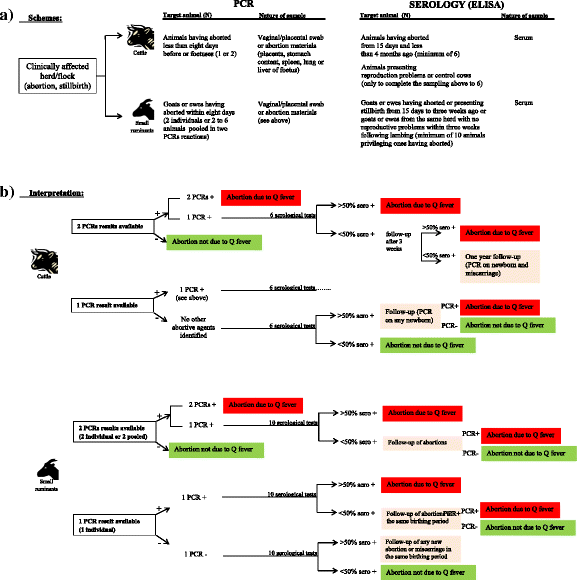Farming, Q fever and public health: agricultural practices and beyond
- PMID: 29321921
- PMCID: PMC5759282
- DOI: 10.1186/s13690-017-0248-y
Farming, Q fever and public health: agricultural practices and beyond
Abstract
Since the Neolithic period, humans have domesticated herbivores to have food readily at hand. The cohabitation with animals brought various advantages that drastically changed the human lifestyle but simultaneously led to the emergence of new epidemics. The majority of human pathogens known so far are zoonotic diseases and the development of both agricultural practices and human activities have provided new dynamics for transmission. This article provides a general overview of some factors that influence the epidemic potential of a zoonotic disease, Q fever. As an example of a disease where the interaction between the environment, animal (domestic or wildlife) and human populations determines the likelihood of the epidemic potential, the management of infection due to the Q fever agent, Coxiella burnetii, provides an interesting model for the application of the holistic One Health approach.
Keywords: Agricultural practices; Control; Coxiella burnetii; One health; Surveillance; Transmission.
Conflict of interest statement
Not applicableNot applicableThe authors declare that they have no competing interests.Springer Nature remains neutral with regard to jurisdictional claims in published maps and institutional affiliations.
Figures
References
-
- Morand S, McIntyre KM, Baylis M. Domesticated animals and human infectious diseases of zoonotic origins: domestication time matters. Infect Genet Evol. 2014;24:76–81. - PubMed
-
- Smith NH, Hewinson RG, Kremer K, Brosch R, Gordon SV. Myths and misconceptions: the origin and evolution of mycobacterium tuberculosis. Nat Rev Microbiol. 2009;7(7):537–544. - PubMed
Publication types
LinkOut - more resources
Full Text Sources
Other Literature Sources
Research Materials


